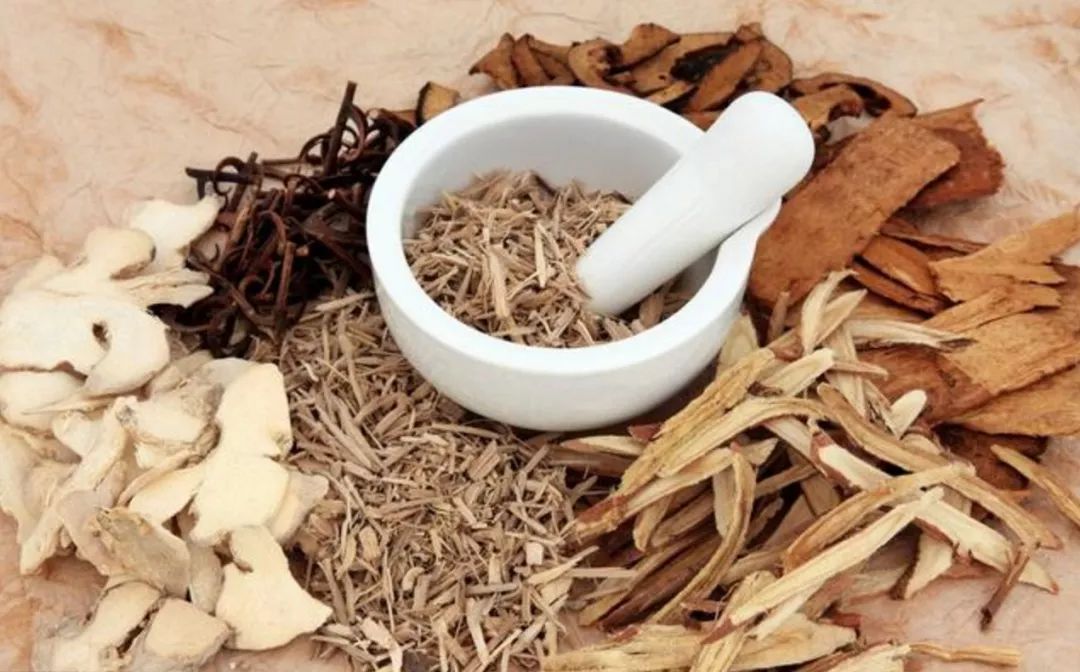As people’s living standards rise, there is an increasing emphasis on food safety, leading to significant restrictions on the use of antibiotics. However, the complex farming environment in our country still necessitates the use of medications to prevent diseases. The concept in Traditional Chinese Veterinary Medicine (TCVM) that “the best physician treats the unillness, while the inferior physician treats the already ill” aligns perfectly with the modern principle of “prevention first, treatment second,” resulting in growing recognition of TCVM among pig farmers.
Currently, the two main types of TCVM available on the market are powder granules and extracts. Powder granules have the advantages of mature formulations and lower prices, while extracts offer guaranteed therapeutic effects and are convenient to use as they dissolve in water.
TCVM Powder Granules
TCVM powder granules refer to formulations based on existing classic prescriptions (such as Qingwen Baidu San, Jingfang Baidu San, Fuzheng Jiedu San, Yin Qiao San, etc.), which are combined and then crushed and packaged for production. These medications are based on established formulas, eliminating the need for new research and development costs. Additionally, some Chinese herbs are cultivated extensively, resulting in lower prices, making TCVM powder granules relatively inexpensive.Using a slogan from a certain brand’s Liuwei Dihuang Wan advertisement, “Good herbs make good medicine,” TCVM emphasizes the importance of authentic medicinal materials (herbs produced in specific natural conditions and ecological environments). For example, the well-known herb Huangqi (Astragalus membranaceus) varies in total solid content depending on its origin. Laboratory analyses show that Huangqi from Gansu has the highest solid content, followed by that from Inner Mongolia, with both regions’ Huangqi referred to as “Tieqi,” indicating that Gansu and Inner Mongolia are the best production areas for Huangqi, exemplifying the importance of authentic sourcing.Typically, when pig farmers add medication to feed, they often use a ratio of 1 kilogram of medication to 1 ton of feed, which is not a standardized method. For instance, the daily dosage of Qingwen Baidu San for pigs mixed in feed is 50-100g, while an adult pregnant sow’s daily feed intake is about 3 kilograms. This means that at least 50g of Qingwen Baidu San must be included in 3 kilograms of feed to achieve an effective drug concentration, requiring 16.7 to 33.3 kilograms in 1 ton of feed. Therefore, pig farmers must pay attention to the dosage when using TCVM powder granules; for treating pig diseases with Qingwen Baidu San, at least 10 kilograms must be added to 1 ton of feed.With the development of Chinese medicine and TCVM, there is now a variant of powder granules on the market— TCVM Ultra-fine PowderTCVM ultra-fine powder emerged in the 1990s and is considered one of the important directions for the modernization of Chinese medicine. According to the national Chinese medicine standards, ultra-fine powder must reach around 200 mesh, meaning the particle size should be controlled to about 70 microns. By ultra-fine grinding of the herbal materials, the cell walls of the plant cells are broken, releasing the active components within the cells, reducing the dosage of herbal materials and increasing their utilization rate.However, the ultra-fine grinding technology for TCVM is currently well-utilized in fields such as food, cosmetics, and the processing of precious herbal materials. Therefore, many products on the market claiming to be ultra-fine or nano-level grinding may be misleading pig farmers under the guise of high technology, so farmers should be cautious in their identification. TCVM ExtractsTCVM extracts are produced under standardized processing conditions, resulting in extracts that meet certain quality standards. A significant difference between Chinese herbal extracts and powder granules is that the formulations of extracts are relatively simple. For example, Huangqi polysaccharide powder contains only Huangqi polysaccharides, while Yinhuang soluble powder contains only extracts from Jin Yin Hua (Lonicera japonica) and Huang Qin (Scutellaria baicalensis), and Shuang Huang Lian soluble powder contains only extracts from Jin Yin Hua, Huang Qin, and Lian Qiao (Forsythia suspensa), whereas Qingwen Baidu San contains as many as 14 different herbal materials.Moreover, TCVM extracts often utilize water to extract the active components, which are then dried and processed. Therefore, TCVM extracts can be administered both by mixing with feed and by drinking water. Additionally, sweeteners and other auxiliary components can be added to mask the bitterness of TCVM. However, the analysis of the effective components in TCVM extracts requires significant upfront research and development costs, as well as higher processing costs, resulting in a higher price compared to TCVM powder granules.
TCVM ExtractsTCVM extracts are produced under standardized processing conditions, resulting in extracts that meet certain quality standards. A significant difference between Chinese herbal extracts and powder granules is that the formulations of extracts are relatively simple. For example, Huangqi polysaccharide powder contains only Huangqi polysaccharides, while Yinhuang soluble powder contains only extracts from Jin Yin Hua (Lonicera japonica) and Huang Qin (Scutellaria baicalensis), and Shuang Huang Lian soluble powder contains only extracts from Jin Yin Hua, Huang Qin, and Lian Qiao (Forsythia suspensa), whereas Qingwen Baidu San contains as many as 14 different herbal materials.Moreover, TCVM extracts often utilize water to extract the active components, which are then dried and processed. Therefore, TCVM extracts can be administered both by mixing with feed and by drinking water. Additionally, sweeteners and other auxiliary components can be added to mask the bitterness of TCVM. However, the analysis of the effective components in TCVM extracts requires significant upfront research and development costs, as well as higher processing costs, resulting in a higher price compared to TCVM powder granules.
How to Choose Between TCVM Powder Granules and Extracts
Considering the advantages and disadvantages of both powder granules and extracts, for preventive health medications, pig farmers may opt for the relatively inexpensive TCVM powder granules.However, the quality of these medications can vary significantly, so farmers should verify the authenticity of the medications through the national drug testing system. If used as therapeutic medications, or if the method of administration is limited to drinking water, farmers should choose extracts with clearer components and higher solubility in water.The Basic Principles of TCVM Medication and AdministrationTraditional Chinese Medicine (TCM) and Chinese herbal medicine have been treasures of the Chinese nation for thousands of years, and centuries of experience have proven their effectiveness in preventing and treating diseases, and the same applies to TCVM. This is the foundational condition for the existence and development of TCVM. So, where can TCVM demonstrate its advantages in the prevention and control of animal epidemics? The answer can be found in the theory of TCVM, which emphasizes treating the unillness (preventing disease before it occurs) and preventing disease progression. The Huangdi Neijing states: “The sage does not treat the already ill but treats the unillness; does not treat the already chaotic but treats the unchaotic. This is the principle. To treat a disease after it has developed is like digging a well when thirsty or forging a tool after a fight; is it not too late?” Thus, the basic principles of TCVM medication and administration can be summarized as follows:1. In the development of formulations, the basic principle of prevention over treatment must be adhered to.2. Help the body restore balance in its self-regulating system. The internal systems of animals and the natural world exist in a state of balance; breaking this balance can lead to discomfort and illness. Using Chinese medicine to regulate this balance can alleviate pain, as acupuncture exemplifies.3. Use dialectical medication, treating the root of the disease, achieving great results with minimal effort.4. The use of Chinese medicine must be guided by TCVM theory, and so must the production of medications. Authentic medicinal materials must be used, as the properties and efficacy of veterinary herbs vary significantly by origin. A company wishing to excel and develop in TCVM must establish its own GMP medicinal material cultivation base.5. The compatibility of Chinese medicine must follow the principles of medicinal properties, compatibility prohibitions, and the roles of monarch, minister, assistant, and envoy. The extraction process must be designed according to the components and effects of the herbs, avoiding contradictory designs. For example, Huang Lian (Coptis chinensis) and Huang Qin cannot be extracted together, as the berberine from Huang Lian and the baicalin from Huang Qin cannot be extracted simultaneously.6. When producing medications, different animals and different herbs must be treated with different processing principles. For instance, ultra-fine powder formulations may be used for ruminants like cattle and sheep, while extracts are preferable for monogastric animals like pigs.7. Design palatability and administration routes according to different animals.
Disclaimer: This WeChat subscription account’s materials and information are collected from the internet, primarily for learning and exchange purposes. We respect the original authors and organizations and support legitimate content. If this article infringes on your rights, please contact us directly via message or phone, and we will delete it immediately!


